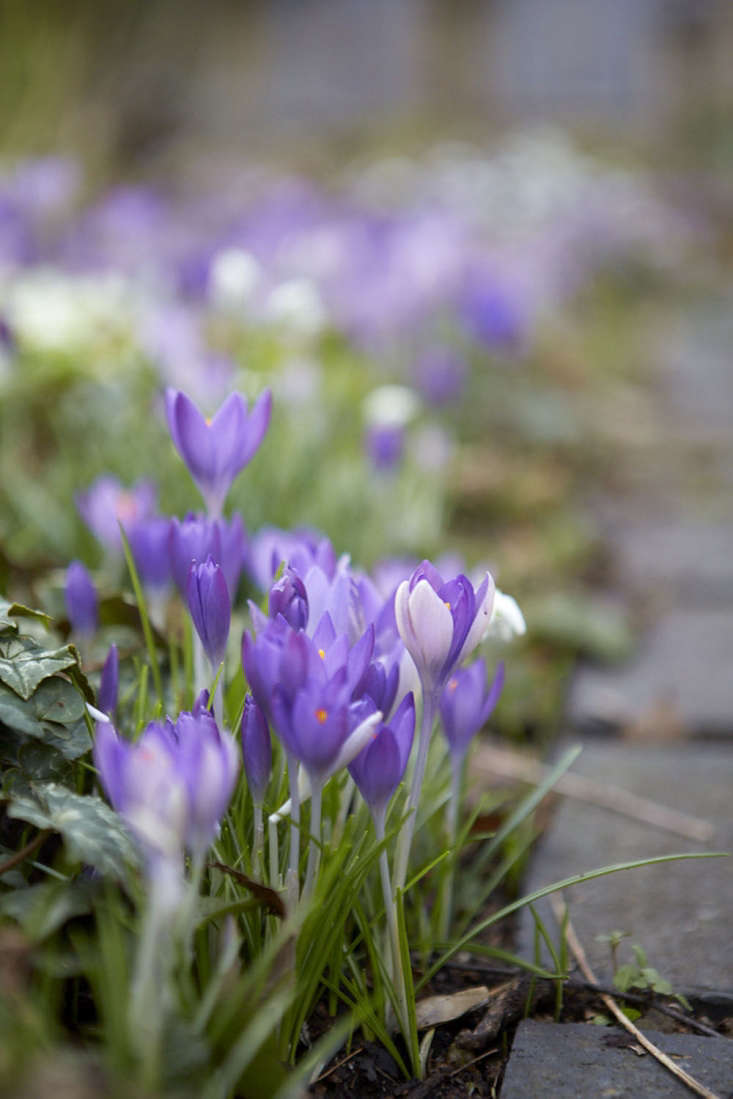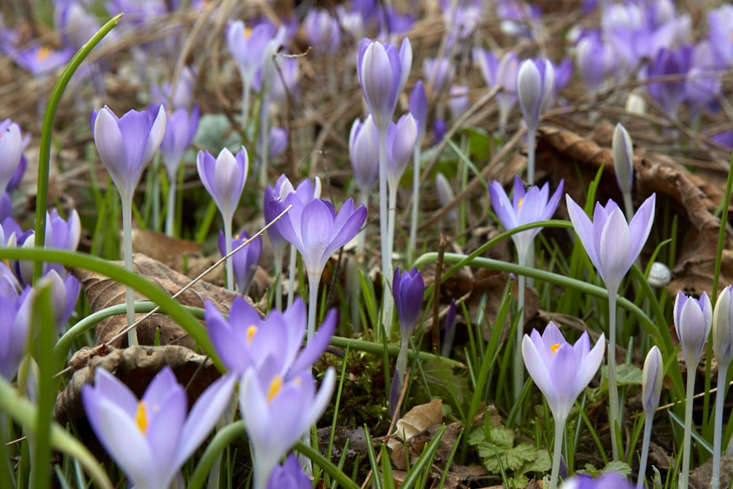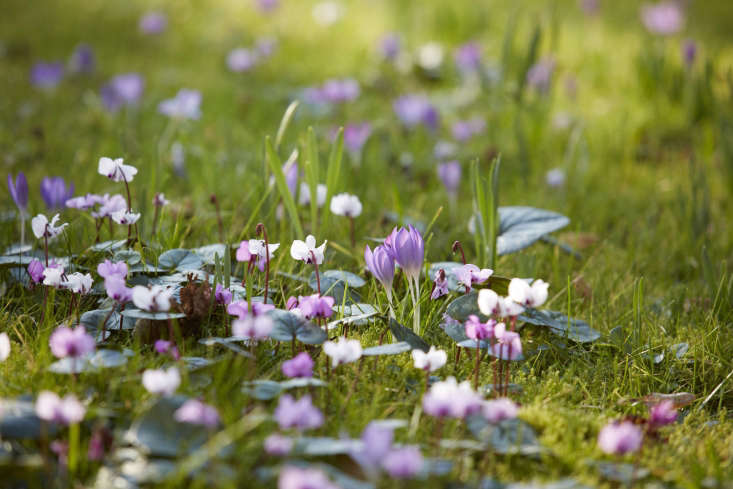Crocus is the essence of spring: diminutive and pure of color. Crocuses are nostalgic; too early for Easter, they somehow evoke Victorian bunnies, or a medieval enameled lawn. The large Dutch hybrids ruin their subtlety; for the best color effects, stay small, within a particular group.
Photography by Britt Willoughby Dyer for Gardenista.

The easiest way to enjoy a lawn of delicately colored, yet hardy crocus is to buy a bag of 100 Crocus tommasianus and scatter them in rough grass, or across an area that will not be trodden on regularly (i.e.: not on the grass by the front door, like mine). They spread through seed. For named varieties, there is ‘Barr’s Purple’, richer in hue and contrasting even more effectively with the bright orange stamens. New crocuses that you are trying out, or want to bring indoors, are best grown in pots while you ponder where to put them in the garden. Clumps of purple, white and orange are a squandered opportunity: go for the pastel shades.

There are so many beauties that you may wish to keep your favorites nearby where they will be seen every day, for example lining a much-used path. Higher elevations will benefit these tiny plants as well, including shallow troughs raised off the ground on stilts (like the troughs in the top courtyard at Sissinghurst).

Reliably evocative, Vita Sackville-West wrote of crocuses: “One wants to see them close to the eye, fully to appreciate the pencilling on the outside of the petals.” She grew them in troughs at waist height or in alpine pans on a table, so that they could be peered into. They were also cut for this purpose (in small quantities) and placed in an old scent bottle or sherry glass.

In her book Vita Sackville-West’s Sissinghurst, Sarah Raven catalogues Vita’s favorite Crocus chrysanthus, while adding adding her own, including: ‘Spring Beauty’, (lilac) ‘Advance’ (mauve and yellow) and ‘Snow Bunting’ (white with a splash of yellow).

C. chrysanthus ‘Snow Bunting’ was a favorite of Christopher Lloyd at Great Dixter and grows there in scented colonies across the Dixter meadows today. With the chrysanthus varieties co-mingling, you can’t go wrong and the aptly named plant supplier Crocus sells them in mixed bags, thereby guaranteeing no lapses in taste (£7.99 for 100 bulbs of Crocus Species, Mixed).

C. tommasianus (“tommies” for short) are considered the best early crocuses and they happen to complement the colors of their contemporaries Cyclamen coum, soon to be joined by Narcissus. Both flowers are good news for bees in early February.
For an enameled lawn, or flowery mead (call it what you will) grass needs to be left alone until July. Between the earliest bulbs and high summer there is ample opportunity for other meadow flowers such as ox-eye daisy and cow parsley to set seed. The grass then needs to be kept short and mowed as late in the year as possible, so that it is neat enough for the earliest flowers to look their best.

Other spring varieties to stick with are Crocus biflorus (look for ‘Blue Pearl’), and C. longiflorus, known as the long-flowered crocus.
N.B.: For more crocus theory, see Required Reading: Vita Sackville-West’s Sissinghurst and browse through our Bulbs & Tubers archives to find all our posts in Crocus: A Field Guide.
Finally, get more ideas on how to successfully plant, grow, and care for crocus with our Crocus: A Field Guide.
Interested in other bulbs and tubers for your garden or indoor space? Get more ideas on how to plant, grow, and care for various bulbs and tubers with our Bulbs & Tubers: A Field Guide.
Finally, get more ideas on how to plant, grow, and care for various perennial plants with our Perennials: A Field Guide.










Have a Question or Comment About This Post?
Join the conversation